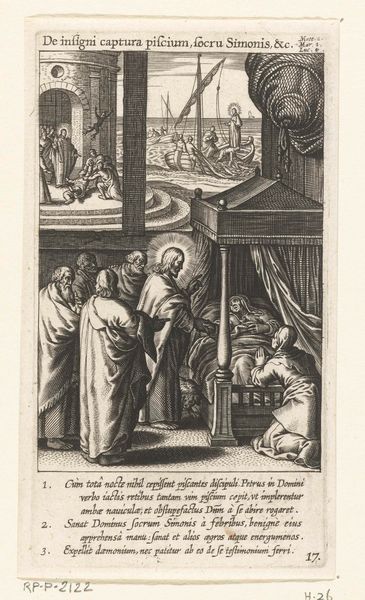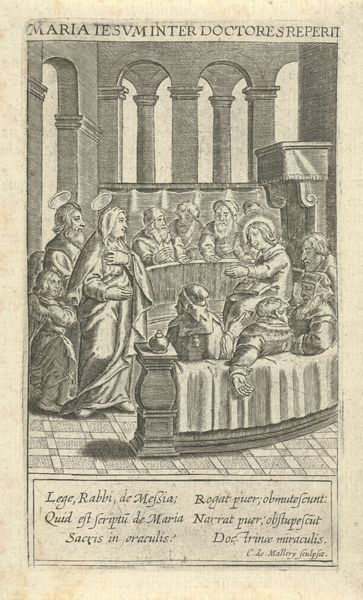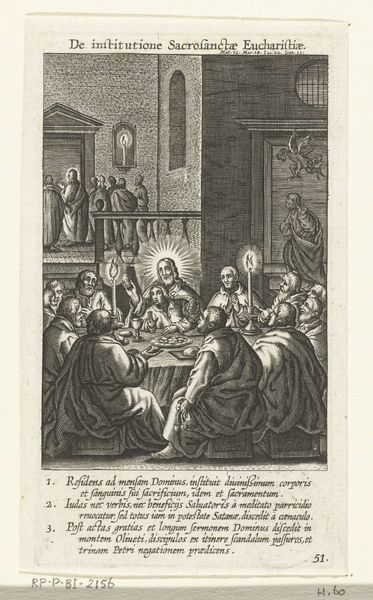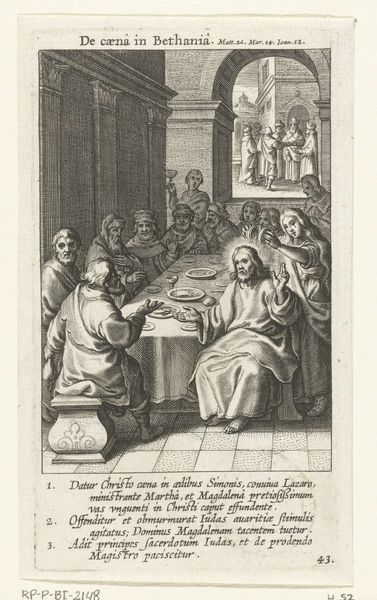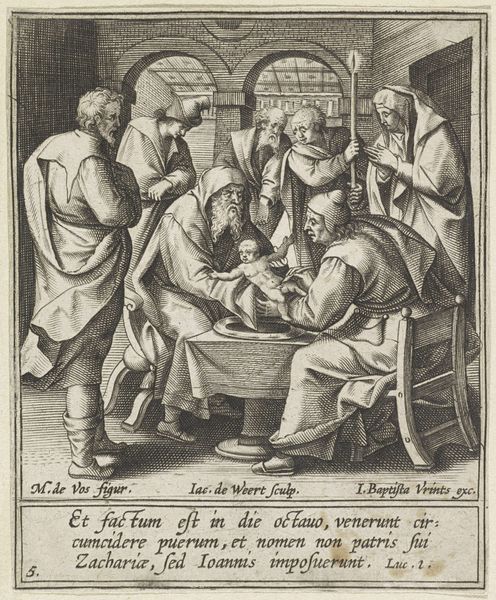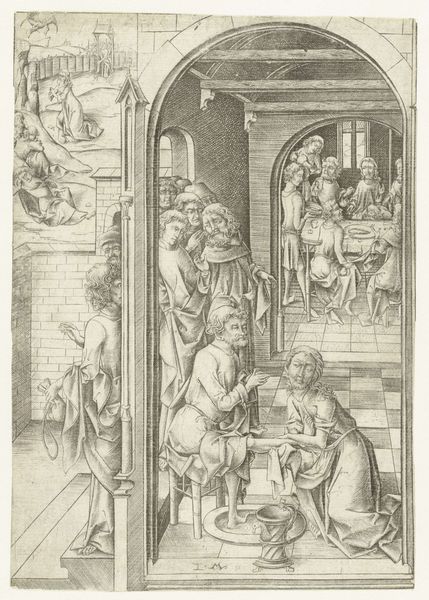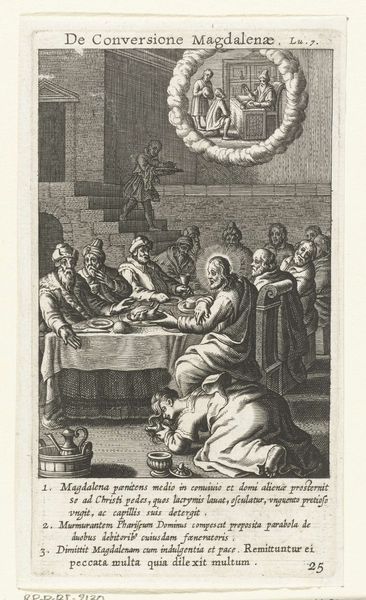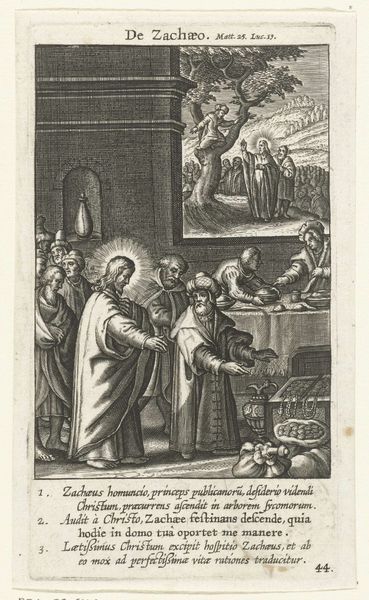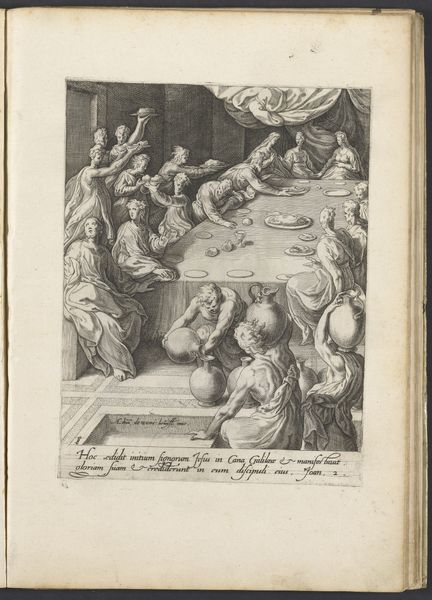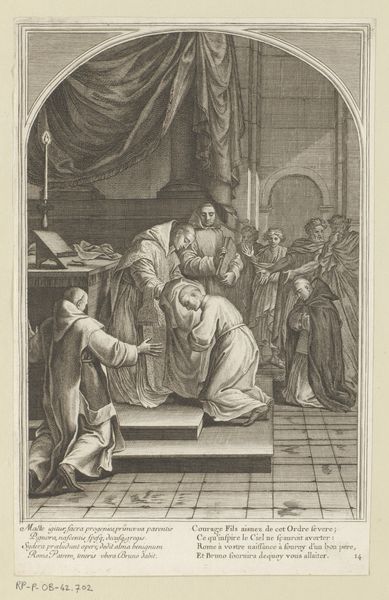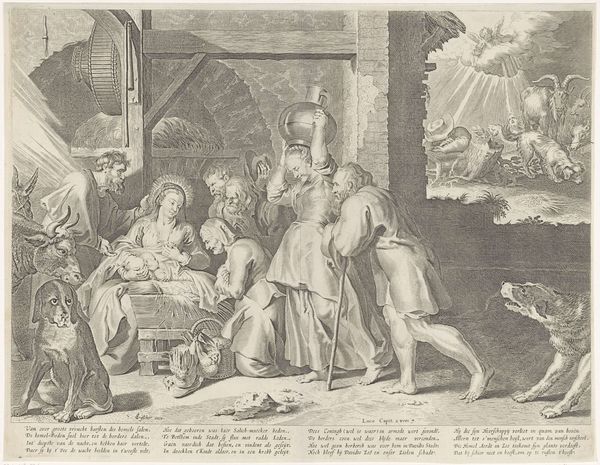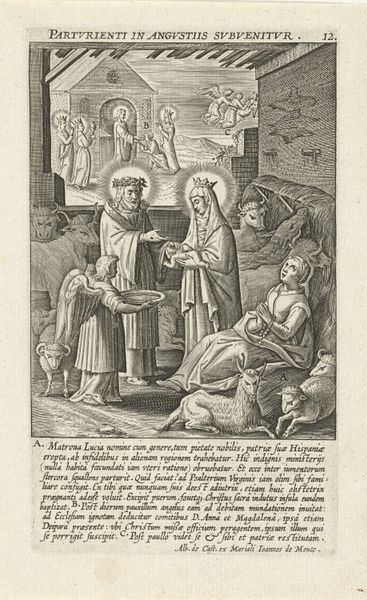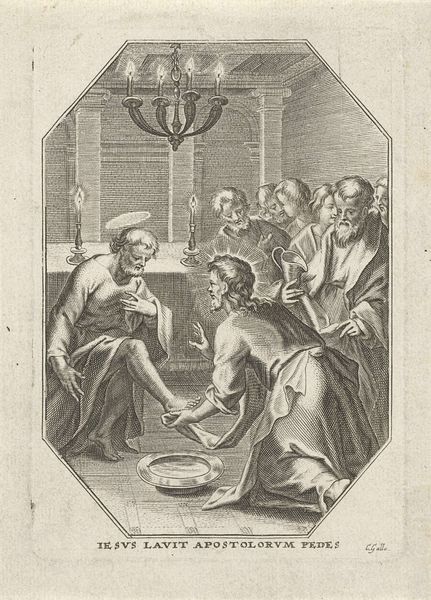
print, intaglio, engraving
#
baroque
# print
#
intaglio
#
old engraving style
#
figuration
#
history-painting
#
engraving
Dimensions: height 150 mm, width 89 mm
Copyright: Rijks Museum: Open Domain
This print, Mirakel van de prostituee uit Rome, was made by Theodoor Galle around the turn of the 17th century, using the intaglio technique of engraving. Look closely and you'll notice the crisp lines and intricate detail. These are achieved by cutting into a copper plate, applying ink, and then pressing the plate onto paper. This process allows for the reproduction of images, making them more accessible to a wider audience than unique paintings. Prints like this one played a crucial role in disseminating religious and moral stories during the Reformation. Galle, trained in the workshop of the prolific print publisher Philips Galle, his father, operated within a highly organized system of production, where specialized artisans collaborated to produce and distribute prints on a commercial scale. This was a business, and the images had to be compelling. Consider the labor involved: from the mining of copper to the skilled hand of the engraver, each step reflects the economic and social conditions of the time. By focusing on materials, making, and context, we can appreciate the full meaning of this artwork and how it challenges traditional boundaries between art, craft, and commerce.
Comments
No comments
Be the first to comment and join the conversation on the ultimate creative platform.
